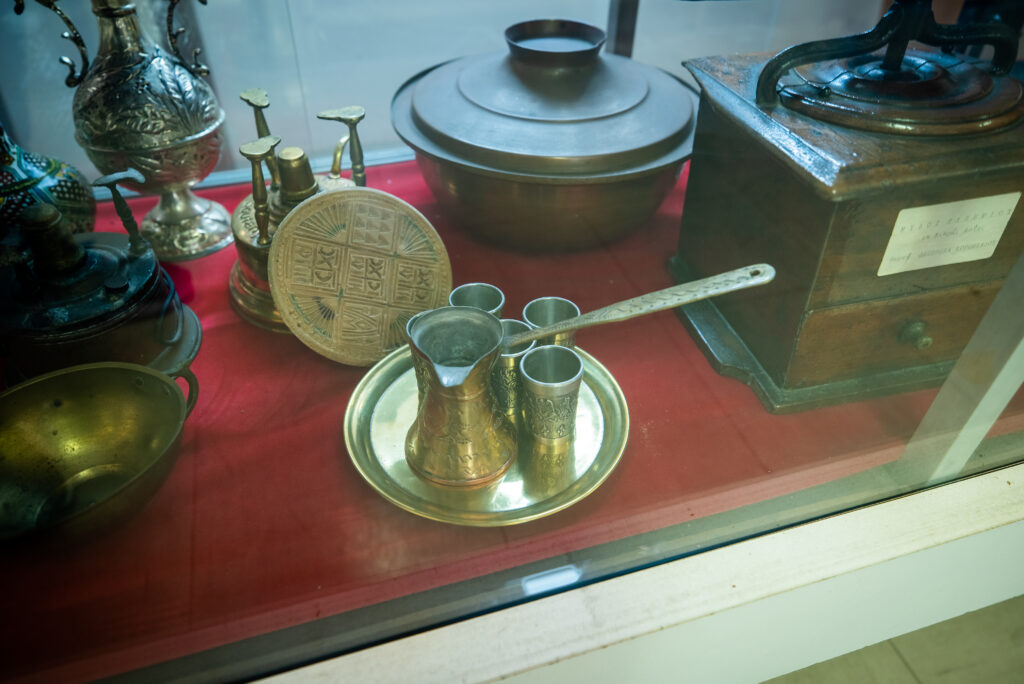
The refugees from Sinasos, just like all refugees who left their homes in a more organised fashion due to the population exchange agreement, filled their bundles and chests with items of high material or emotional value as well as objects they thought would prove useful. Household items could fall under any of these categories. Coffee cups, coffee pots, grinders, plates, glasses, cutlery, bronze bowls and platters were the most common everyday objects that still survive in the houses of refugee descendants.
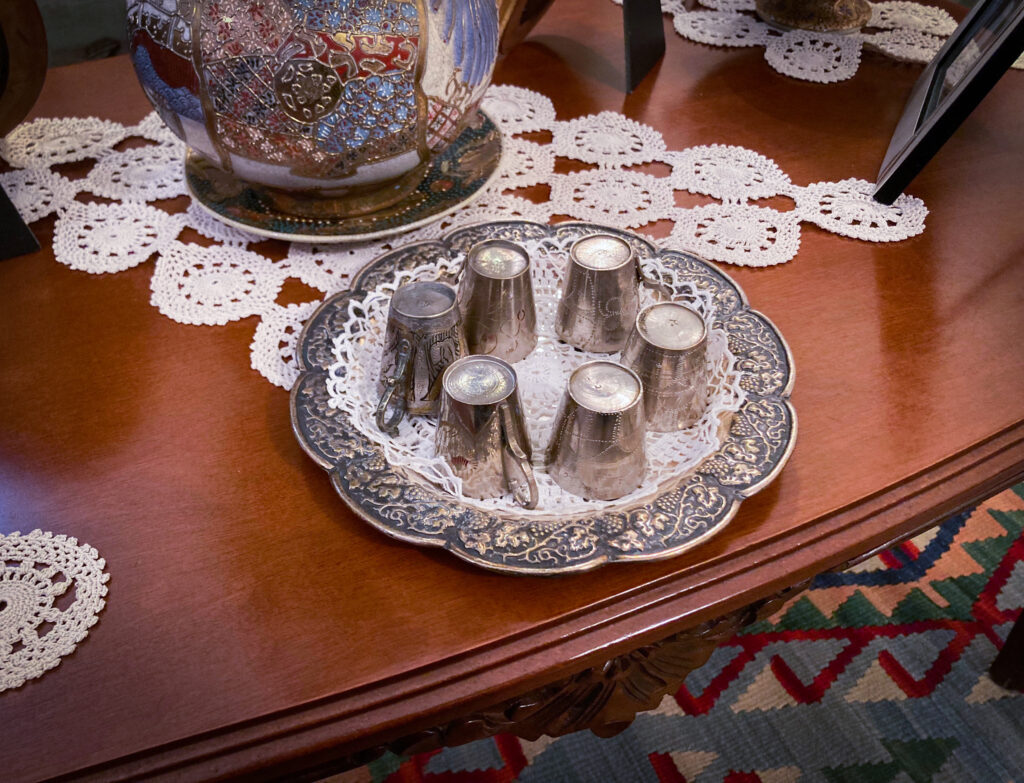
On October 2, 1924, according to the terms of the Lausanne Treaty, Angeliki, her three children and her mother-in-law, Nymfodora Chatzitheodoridou, left their home carrying seven bundles with them in which they tried to fit their most useful and valuable possessions. The family made it to Mersin where they boarded the ship Destounis and travelled to Greece. Half the ship’s passengers disembarked in Evoia and the other half in Piraeus.
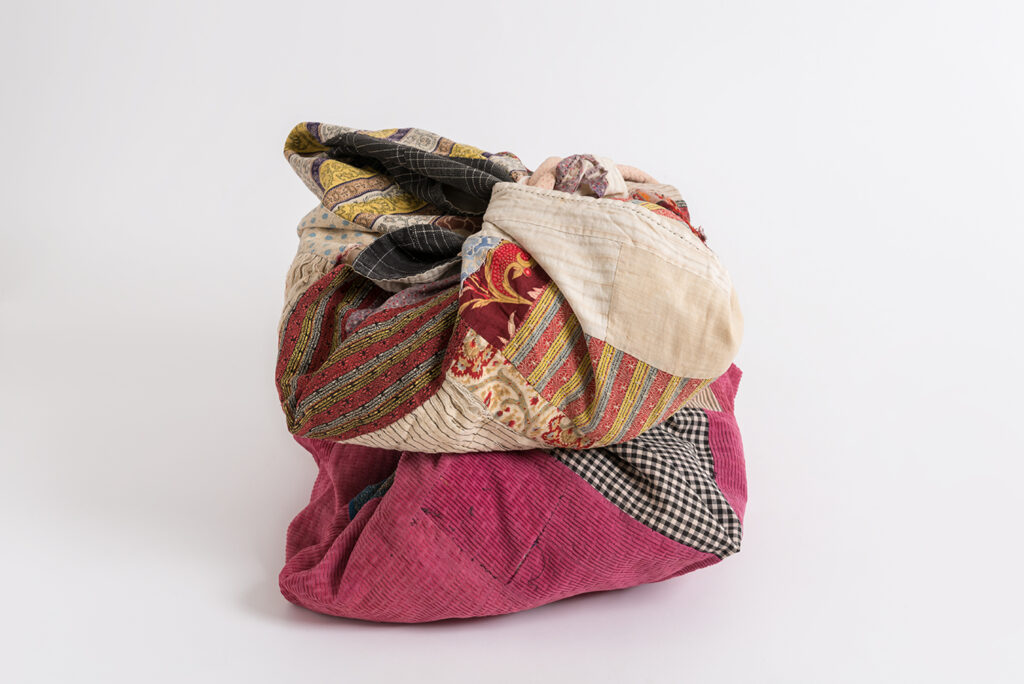
These bundles are made up of pieces of cotton fabric sewn together and reinforced with a lining to make them sturdier. Not many bundles of this kind are preserved today, but for many years they were the main means of carrying and transporting objects, which makes them a common sight in photographs depicting the population exchange process.
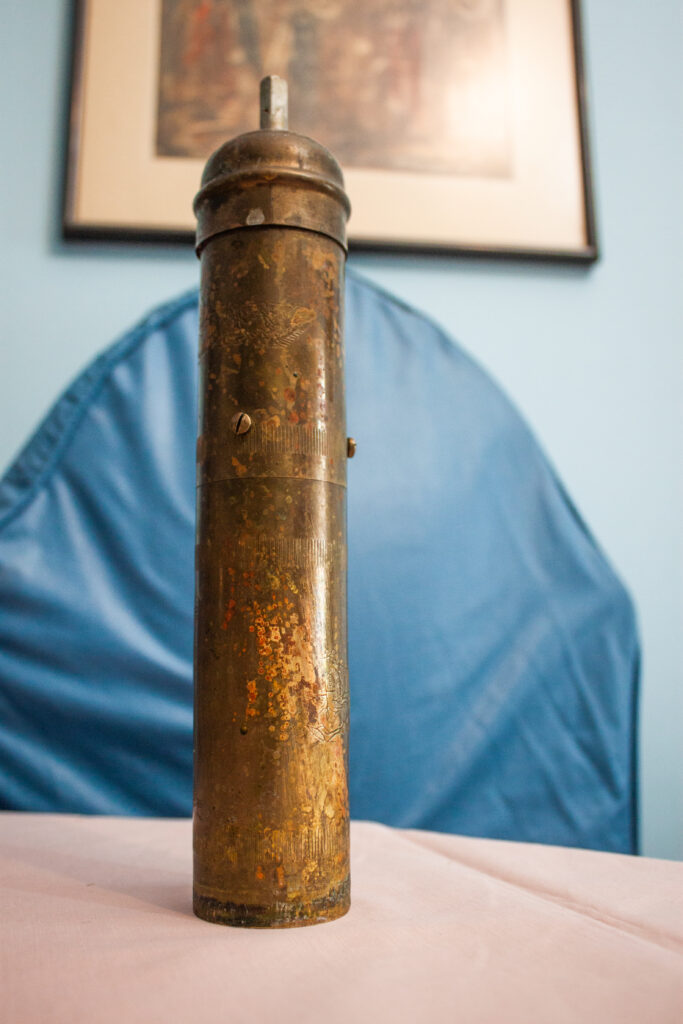
Epameinondas Markis was born in Panormos of Asia Minor in 1901. He didn’t finish school because he was in the habit of throwing marbles at his teacher. He became a carpenter’s apprentice in Kontoskali, with his father handing over all responsibility for the boy to his master. In 1917, he was to be conscripted into
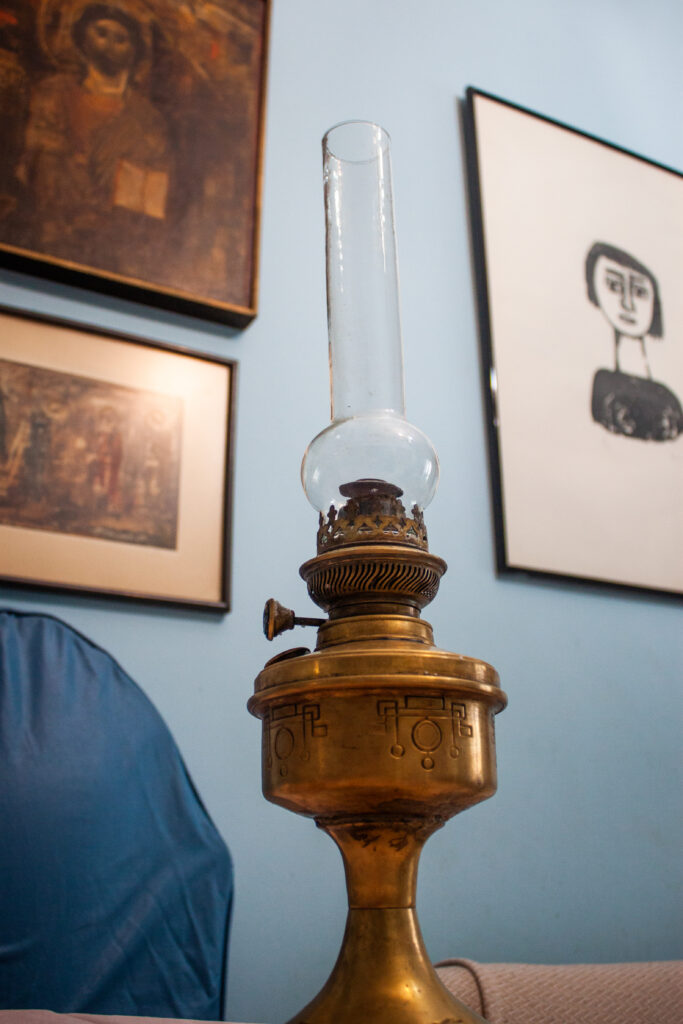
Efterpi Marki, daughter of Epameinondas and Olga Antoniou from Korissos, Kastoria, told Areti Kondylidou that the family had brought a big part of their household with them. Only some bronze cookware survives, along with three ‘precious’ items, one of which is a bronze petrol lamp. Efterpi considers this lamp to be the most valuable item in her household and she is extremely proud of it.

‘Grandma Narina was the only grandmother I got to know and spend some time with. She used to call me “yavrum”’, says her granddaughter, Erifyli Souvatzidou. Now, ‘the dowry from Kaisareia’ belongs to Erifyli along with her sweet memories of Gradma Narina and the refugee house in Kokkinia.
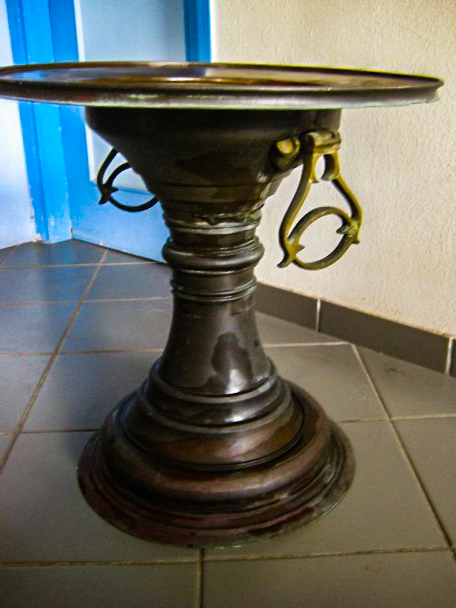
My grandmother on my mother’s side was like a heroine out of One Thousand and One Nights. Her name was Narina, which became Maria in Greek, and she came to Greece from Yozgat in Kaisareia (Kayseri) with her husband, Grandpa Symeon, a merchant who traded in fur and carpets all over Europe. They arrived via Constantinople, leaving behind relatives as they were passing through Greece: some in Kavala, Vasilis and Ierousalim Katemidis in Thessaloniki, Aunt Veta and Uncle Giorgos Doxopoulos in Nea Ionia of Volos.
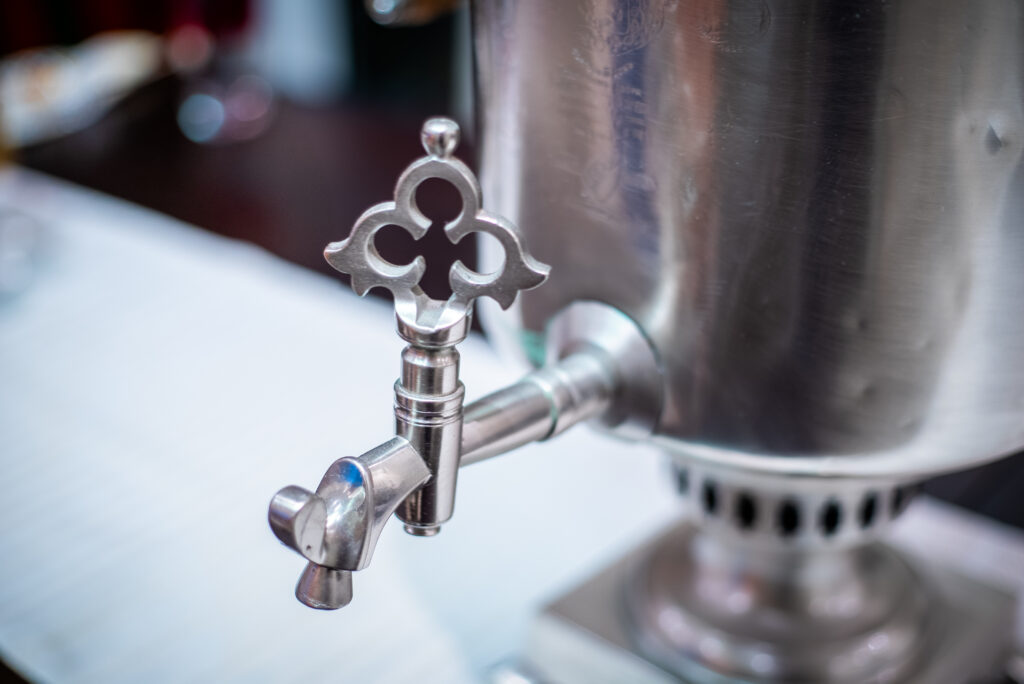
The samovar used to be a practical tool in the family’s everyday life. Today, it is a family heirloom of great sentimental value for Emmanouil Michailidis; a precious piece of his family past and the roots they put down in Nikaia.
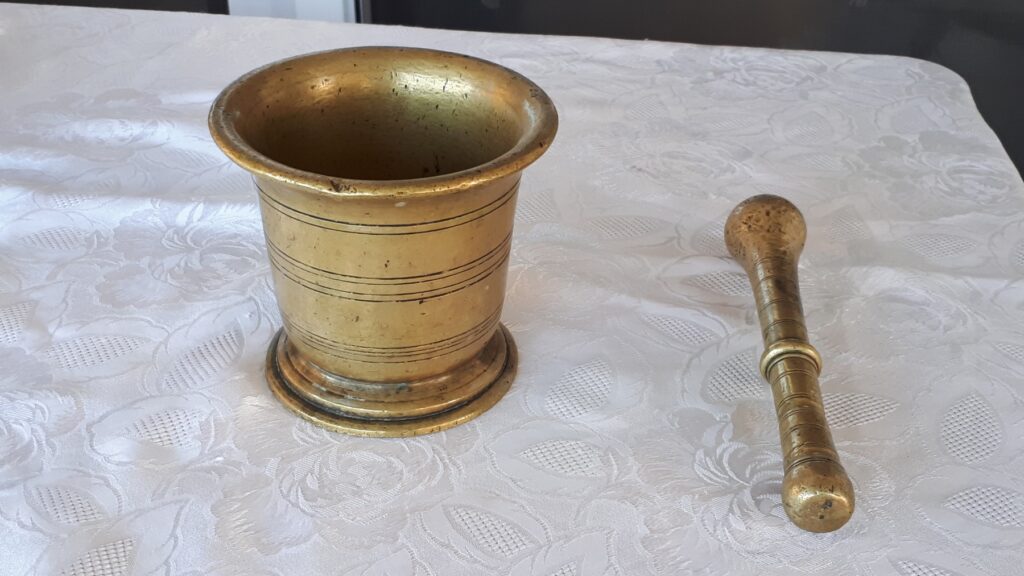
Two families, Karras and Anastasiadou, became refugees in 1922 when they were forced to leave Peristasi in Eastern Thrace, a seaside village in Marmara, in the province of Raidestos.
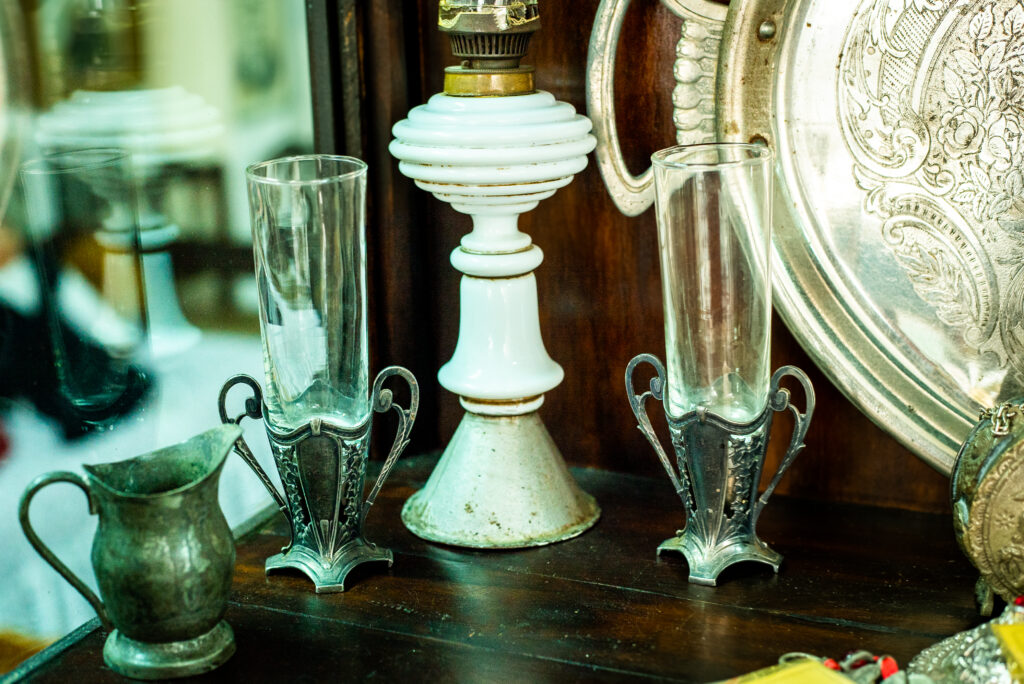
Ourania Stamatiadou-Koutsogianni, the granddaughter and namesake of Ourania Stamatiadou, is a retired educator and the chairwoman of the ‘Englezonisi’ Cultural Association of Asia Minor Greeks of Nea Ionia, Magnisia. She is overwhelmingly generous with stories of her family and the rest of the Englezonisi refugees. Besides sharing her narratives, she also keeps two small vases brought to Greece by her family on a small display at the association’s offices.









